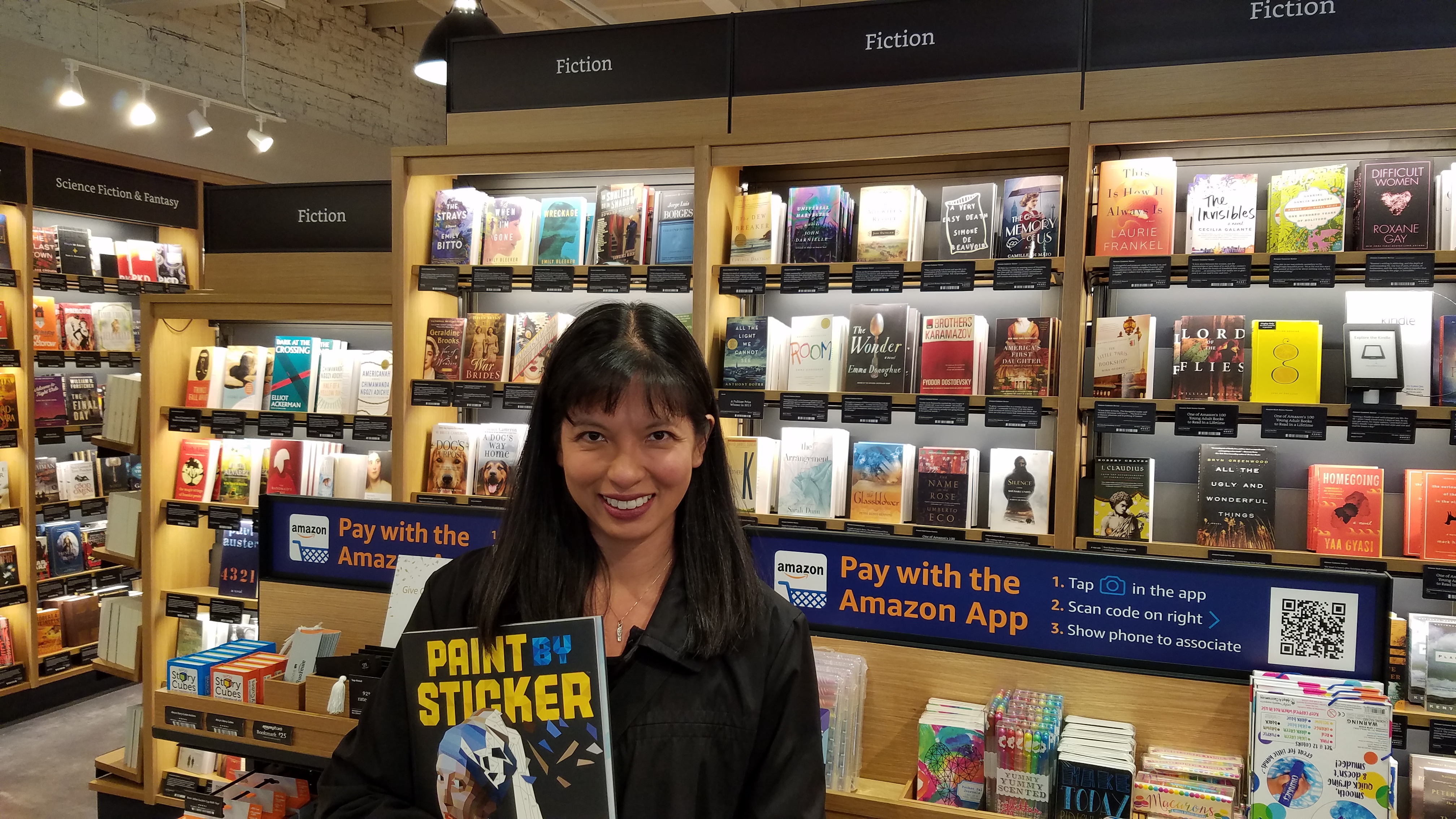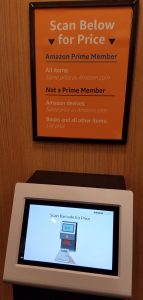
My First Visit to Amazon’s Bookstore (Brick-and-Mortar Edition)
15 years after buying my first book on Amazon, I finally visited the physical Amazon bookstore. Isn’t it usually the other way around?
I flew to Chicago for Memorial Day weekend to see friends, run a 10 mile race, bike 30 miles, and of course, visit the Amazon bookstore (brick-and-mortar edition). The Chicago Amazon bookstore is about 6 miles north of downtown Chicago, in the Lakeview neighborhood, just slightly southeast of Wrigley Field. We were in the area to catch a performance of Blue Man Group, so we made a quick stop at the Amazon bookstore before the show. We found the bookstore amongst other retail shops and restaurants; Southport Avenue is a combination of big brands and local proprietors.
At first glance, it looks much like a tiny Barnes and Noble with books organized by genre, displays of Kindles and Echos, helpful people, checkout line and a small coffee shop, Stumptown.
I enter the store and I’m greeted by a helpful bookstore employee. “How can I help you today?” I respond, “Oh, I’m from out of town and checking this place out like any other tourist attraction,” translation, I’m not really here to buy anything. Store associate response, “Welcome! Feel free to peruse the books and then buy the book on your Kindle.”
Just like the Apple store, they had a bunch of Amazon Echos on display for customers to try out. Just for fun, I approach the Echo and say, “Alexa, what is 1 + 1?” Alexa responds with her usual sassiness, “1+1=2, but I think you knew that already.”
Brick-and-Mortar Challenges for Amazon
Since it is a physical bookstore, Amazon is facing some of the same limitations as any other bookstore: space and personalization. Unlike Amazon.com, there are only so many books that they can house in the physical store. Despite what the associate tells me about “ok to peruse,” they need to sell-through the inventory before a best seller gets stale. And keep in mind that it would be super difficult to personalize the experience (as they do online) by moving the books most appealing to each customer to the front of the physical store just before said customer enters.
Thus, the Amazon bookstore needs to differentiate in new and innovative ways.
Inventory Selection
First with their inventory selection, they provide a selection of books that are not ideal for Kindle. i.e. cookbooks, coffee table books, and coloring books. I ended up purchasing a “Paint by number with stickers” book because it wasn’t something I could enjoy on Kindle.
Pricing
Secondly, Amazon is differentiating with pricing. In a webinar I conducted in 2014, I noted that retailers would charge a lower price online and a higher price of the same item in-store. This caused a lot of customer dissatisfaction and confusion. Today most retailers understand that they need to be transparent with pricing. Amazon has taken a slightly different approach to this idea by providing the same pricing online as in-store for Prime members, but rack rate pricing for non-members. This is an interesting approach as it increases satisfaction for Prime Members and possibly dissatisfaction for non-Prime customers. Amazon has implemented this policy to align with their strategy of increasing Prime membership.
Check-Out process
Third, Amazon is differentiating in the check-out process. Don’t get me wrong, you can walk-in and buy a book with cash or credit, but you can also pay with your Amazon account. In my case, I had an Amazon gift card on my Amazon account, and with a simple scan of my phone, I purchased my item. They set up a process to make it as seamless as possible utilizing mobile and QR code technology.
Prior to the trip, when I first brought up the idea of visiting the Amazon bookstore, my husband, Paul asked, “Is it a bookstore, or a store of best-selling Amazon products?” To his point, Amazon has so many products, would they really want to sell books, or their top selling online items? Amazon started as an online bookstore, and I see their brick-and-mortar bookstore as almost a “return to their roots” venture. Books remain at the core of the Amazon evolution. The format might have changed (Kindle), but the written word (content) is still king.
I’ve been an Amazon customer since 2002, but last month (May 2017) was my first Amazon brick-and-mortar bookstore experience. Amazon is making a big push into brick-and-mortar locations with 7 bookstores across the country today, and 7 more stores coming soon. And let us not forget the pick-up and return Amazon locations. I previously documented my Amazon @Georgia Tech experience, where Georgia Tech students and locals can pick up or return their Amazon products.









